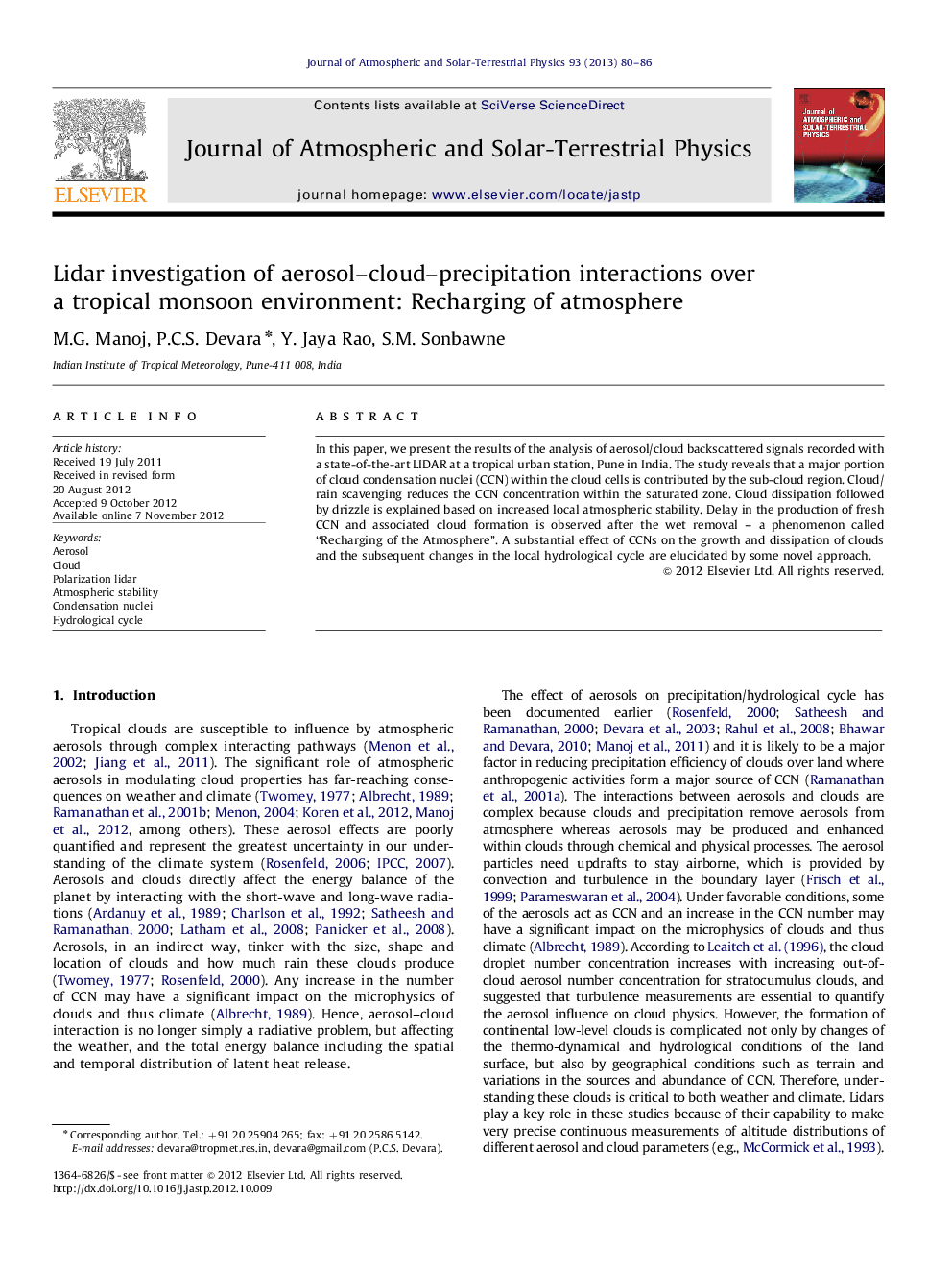| کد مقاله | کد نشریه | سال انتشار | مقاله انگلیسی | نسخه تمام متن |
|---|---|---|---|---|
| 1776751 | 1523642 | 2013 | 7 صفحه PDF | دانلود رایگان |

In this paper, we present the results of the analysis of aerosol/cloud backscattered signals recorded with a state-of-the-art LIDAR at a tropical urban station, Pune in India. The study reveals that a major portion of cloud condensation nuclei (CCN) within the cloud cells is contributed by the sub-cloud region. Cloud/rain scavenging reduces the CCN concentration within the saturated zone. Cloud dissipation followed by drizzle is explained based on increased local atmospheric stability. Delay in the production of fresh CCN and associated cloud formation is observed after the wet removal – a phenomenon called “Recharging of the Atmosphere”. A substantial effect of CCNs on the growth and dissipation of clouds and the subsequent changes in the local hydrological cycle are elucidated by some novel approach.
► Observational evidence of interaction between boundary layer aerosols and clouds.
► Cloud geometrical thickness increases with sub-cloud layer aerosol concentration.
► Many-fold intense turbulence within the cloud as compared to sub-cloud region.
► Post-drizzle time delay for “Recharging of the atmosphere” with fresh CCNs.
Journal: Journal of Atmospheric and Solar-Terrestrial Physics - Volume 93, February 2013, Pages 80–86